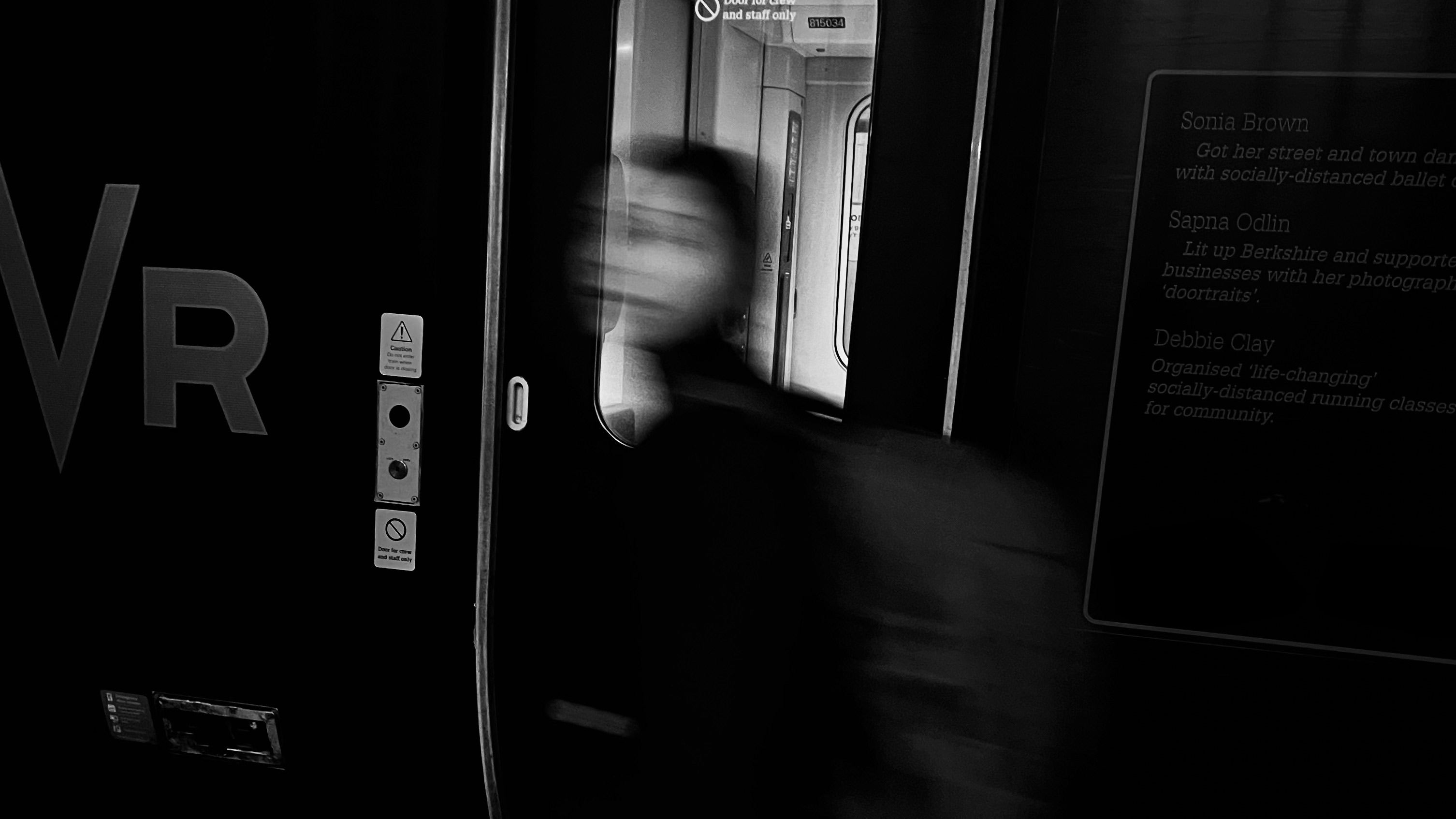Does the Fujifilm GFX 100 II make the GFX 100S obsolete?
Does the new Fujifilm GFX 100 II kill off the GFX 100S? Our Fujifilm GFX 100 II vs GFX 100S comparison finds out
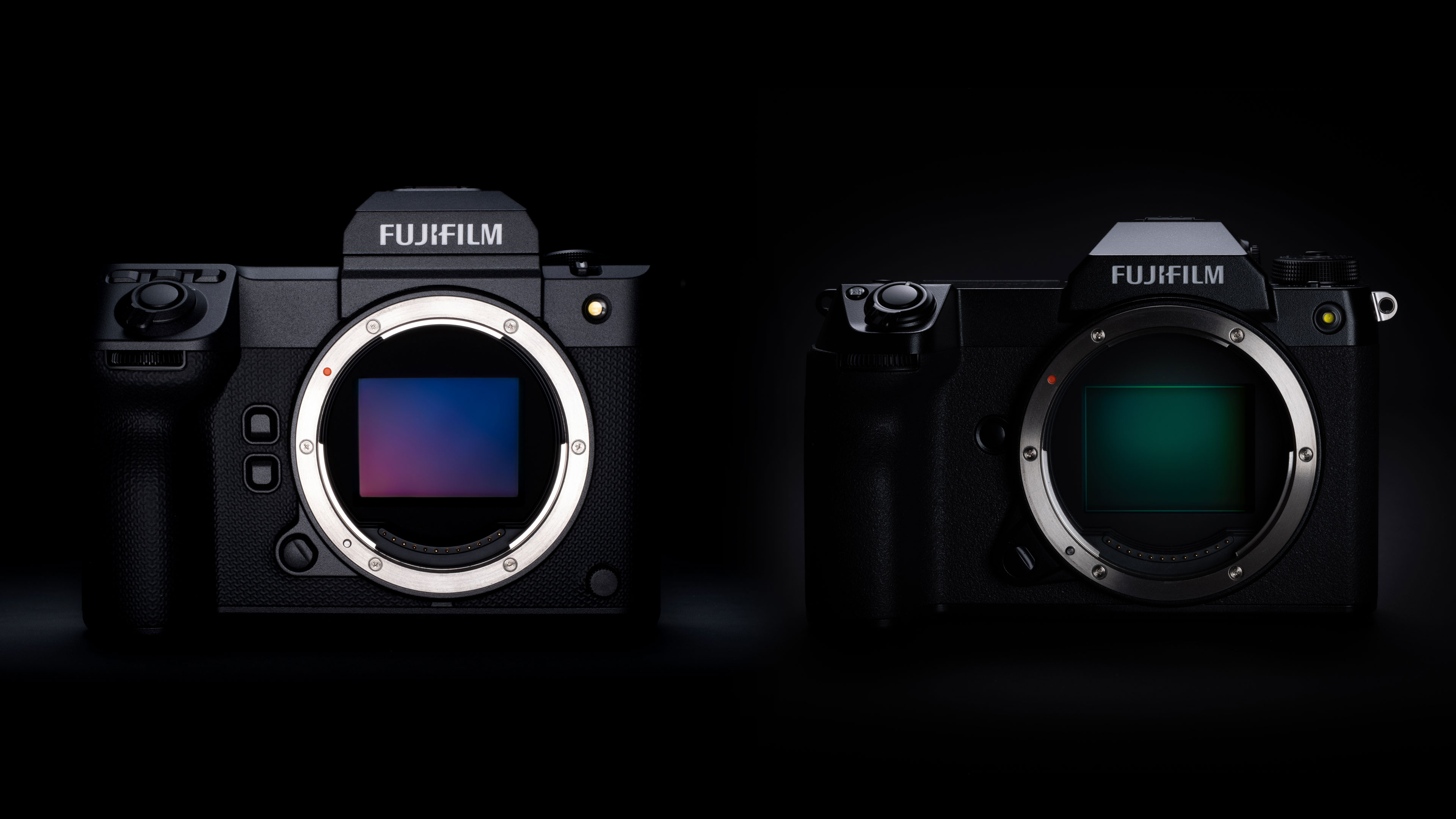
Fujifilm has pulled off quite a coup with the GFX 100 II. It’s taken a camera that we thought could hardly be any better – the GFX 100S – and made one that’s not just better, but a LOT better. So does that mean the older GFX 100S is finished? Not quite.
When the Fujifilm GFX 100S was announced back in January 2021, we were taken aback. We imagine the whole world was. Here was a medium format camera with phase detect AF, IBIS and 4K video, rivaling anything that full frame mirrorless cameras could do at a time when medium format cameras were still expected to be slow, heavy and expensive.
Straight away, the Fujifilm GFX was one of the best medium format cameras you could buy, if not THE best, as well as being one of the highest resolution cameras on the market.
True, the original GFX 100 had all this too, but how on earth (we thought) did Fujifilm manage with the GFX 100S to make a camera just as good at half the size and half the price (more or less). So the original GFX 100S set the bar pretty high and made it hard to imagine what the Fujifilm GFX 100 II might do to beat it.
We soon found out. The GFX 100 II has vastly better video, including 8K and 4K 60p, faster burst shooting with MUCH better buffer depth, and AI subject recognition AF. It doesn’t just put the original GFX 100S in the shade, it challenges the latest and best full frame mirrorless cameras, and with a bigger, better sensor.
The sheer size and cost of the GFX 100 II mean it will probably never be one of the best cameras for sports, but its video credentials surely make it one of the best cameras for filmmaking, if not potentially one of the best cinema cameras.
So, amazing as the new Fujifilm GFX 100S is, does that make it instantly better than the GFX 100S? Not necessarily. As our comparison reveals, it all depends on what you want the camera to do – and we can’t overlook the considerable price difference between these two cameras.
So let’s dive in and see just what the key differences are between the GFX 100S and GFX 100 II.
Fujifilm GFX 100 II vs GFX 100S in 2025
Why you can trust Digital Camera World
1. Sensor
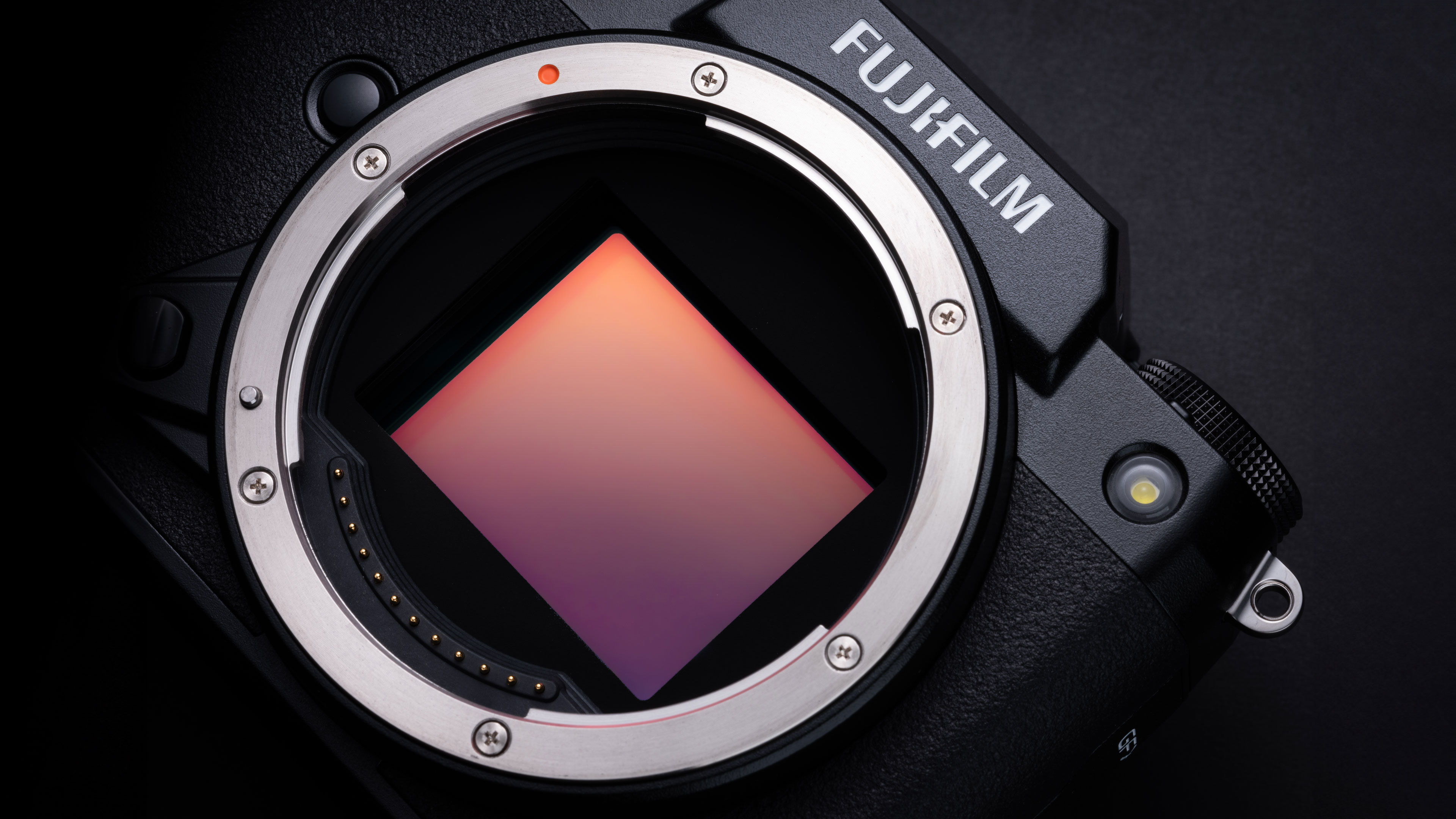
• Fujifilm GFX 100 II: Medium format 43.8 × 32.9mm 102MP CMOS II HS, X-Processor 5, 400MP Pixel Shift Multi-Shot
• Fujifilm GFX 100S: Medium format 43.8 × 32.9mm 102MP CMOS, Quad-core X-Processor 4, 400MP Pixel Shift Multi-Shot
The physical specifications for the sensors in the GFX 100 II and GFX 100S are the same. They both use a 43.8 x 32.9mm medium format CMOS sensor with 102 megapixels resolution, and both offer a 400MP Pixel Shift Multi-Shot option. However, they are paired with two very different processors. The GFX 100S uses Fujifilm’s older quad-core X-Processor 4, while the GFX 100 II has a newer X-Processor 5 which delivers a big leap in performance. Fujifilm claims a 2x increase in readout speed, suppressed rolling shutter, improved image quality and improved AF accuracy in the corners of the frame. It’s also branding the sensor in the GFX 100 II as a ‘CMOS II HS’ type. The newer sensor has redesigned microlenses for better AF accuracy in the corners of the frame and better image quality.
2. ISO range
• Fujifilm GFX 100 II: ISO 80-12,800, exp 40-102,400
• Fujifilm GFX 100S: ISO 100-12,800, exp 50-102,400
There is only a small change to the ISO range in these cameras. Both have a maximum ISO 12,800 setting in the standard range and ISO 102,400 ‘expanded’. However, the GFX 100 II comes with a slightly lower minimum sensitivity of ISO 80 vs ISO 100 with the GFX 100S, with a claimed 30% dynamic range improvement at this setting. In expanded mode, the minimum setting is ISO 40 for the GFX 100 II and ISO 50 for the GFX 100S.
3. Autofocus

• Fujifilm GFX 100 II: Hybrid 117/425 area phase/contrast AF, AI subject detection AF and tracking
• Fujifilm GFX 100S: Hybrid 117/425 area phase/contrast AF, face/eye AF, subject tracking
We were impressed enough with the hybrid AF system of the Fujifilm GFX 100S when it first came out, but the GFX 100 II takes another big step forward. It offers the same number of focus areas and zone types, but introduces AI subject detection for human faces and eyes, animals, birds, cars, motorcycles, bicycles, airplanes, and trains, an updated AF tracking algorithm and a manual focus Focus MAP assist mode. The GFX 100S does offer face and eye detection and regular (non-AI) subject tracking, so it’s still pretty competent – but without the AI assistance of the GFX 100 II.
4. Stabilization
• Fujifilm GFX 100 II: 5-axis IBIS, 8 stops
• Fujifilm GFX 100S: 5-axis IBIS, 6 stops
Both cameras have 5-axis in-body stabilization, and the 6 stops of compensation offered by the GFX 100S still looks pretty good even today. However, the GFX 100 II goes even further, offering up to 8 stops of shake compensation, which is about as good as IBIS systems get right now, regardless of the format.
5. Video

• Fujifilm GFX 100 II: 4K/60p, 8K/30p, FHD/120p, 4:2:2 10-bit Internal Recording, F-Log2, 12-bit Apple ProRes RAW up to 8K 30p to Atomos over HDMI, Waveform, Vectorscope, Zebras,
• Fujifilm GFX 100S: 4K/30p, 10-bit F-Log, 12-bit ProRes RAW via HDMI to Ninja V
Again, the GFX 100S was pretty impressive when it first came out, with its ability to capture 4K video at 30fps, and Apple ProRes RAW over HDMI, together with 10-bit F-Log video for extra color grading headroom. However, the GFX 100 II blows it away for video specifications, with a maximum resolution of 8K at 30fps, 4K at up to 60fps and FHD at 120fps – though the permutations of resolution, frame rate and aspect ratios from 1.0-1.51x can get pretty confusing.
It doesn’t stop there. The GFX 100 II offers 4:2:2 10-bit internal recording, Fujifilm’s new 14+ stop F-Log2 profile, compatibility with the Fujifilm FAN-001 Cooling Fan for extended recording times, plus the ability to record to SSDs over USB. You also get Frame.io Camera to Cloud compatibility.
The GFX 100S is a competent video shooter when needed, but the GFX 100 II threatens to challenge some of the best cinema cameras and gives nothing away to the latest and best hybrid cameras.
6. Stills
• Fujifilm GFX 100 II: 102MP, 8fps, AI AF
• Fujifilm GFX 100S: 102MP, 5fps
While the GFX 100 II is clearly in a different league for serious filmmakers, for stills photographers these cameras are a whole lot closer, and the much lower price of the GFX 100S could be the critical factor here. Fujifilm does claim some image quality improvements for the GFX 100 II, but these look to be at best modest and in practice might be hard to spot. And while the GFX 100 II is certainly better for burst shooting, that’s probably not why photographers would choose a camera like this in the first place. For high-quality, high-resolution stills photography, the GFX 100S looks just as effective as the GFX 100 II, and with enough money left over to buy another GF lens.
7. Continuous shooting
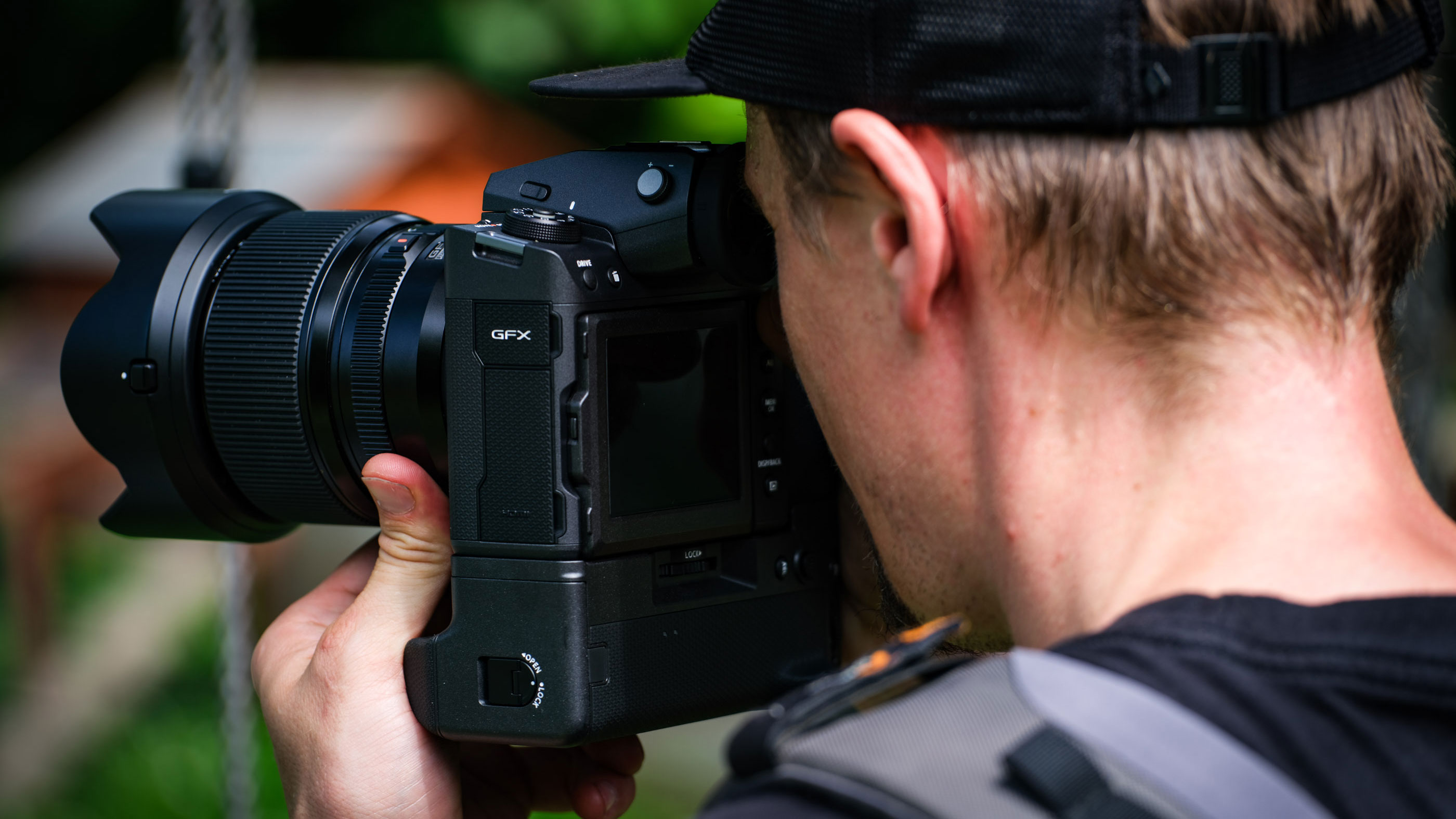
• Fujifilm GFX 100 II: 8fps mechanical shutter, 8.7fps electronic, 1000+ JPEG, 260-1000+ raw depending on mode/compression
• Fujifilm GFX 100S: 5fps mechanical shutter, 42 JPEG, 16 raw
The 5fps continuous shooting speed of the GFX 100S is impressive for a high-resolution medium format camera, but the GFX 100 II tops that with 8fps using its mechanical shutter and 8.7fps with its electronic shutter. The bigger difference, though, is the buffer capacity, where the GFX 100 II’s faster processor and high-speed CFexpress Type B card slot make a huge difference. The GFX 100S can manage short bursts only, but the GFX 100 II has a practically limitless buffer depth by comparison at over 1000 JPEGs and up to 1000 or more raw files, depending on the compression chosen. That, for a 102MP medium format camera, is truly impressive.
8. Viewfinder
• Fujifilm GFX 100 II: 0.64-in, 9.44m dot, 1.0x magnification, 3.2-inch 2.36m dot three-way tilting touchscreen
• Fujifilm GFX 100S: 0.5-in, 3.69m dot, 0.77x magnification, 3.2-inch 2.36m dot three-way tilting touchscreen
There is a considerable difference in the viewfinders of the GFX 100S and the new GFX 100 II. The GFX 100S EVF is not bad in general terms with 3.69 million dots, but hardly stellar in a professional camera at this price point. The GFX 100 II fixes this in a big way, with a resolution jump to 9.44 million dots and 1x magnification. It also has a faster refresh rate at up to 120fps (the GFX 100S went up to 85.7fps in Boost mode) and with blackout free shooting at 5.3fps with the electronic shutter, thanks to the camera’s increased buffer memory.
Round the back, though, things have stayed the same. The GFX 100 II has the same 3.2-inch 2.36m dot 3-way tilting touchscreen as the GFX 100S before it, which is actually fine – it’s a good screen.
9. Storage
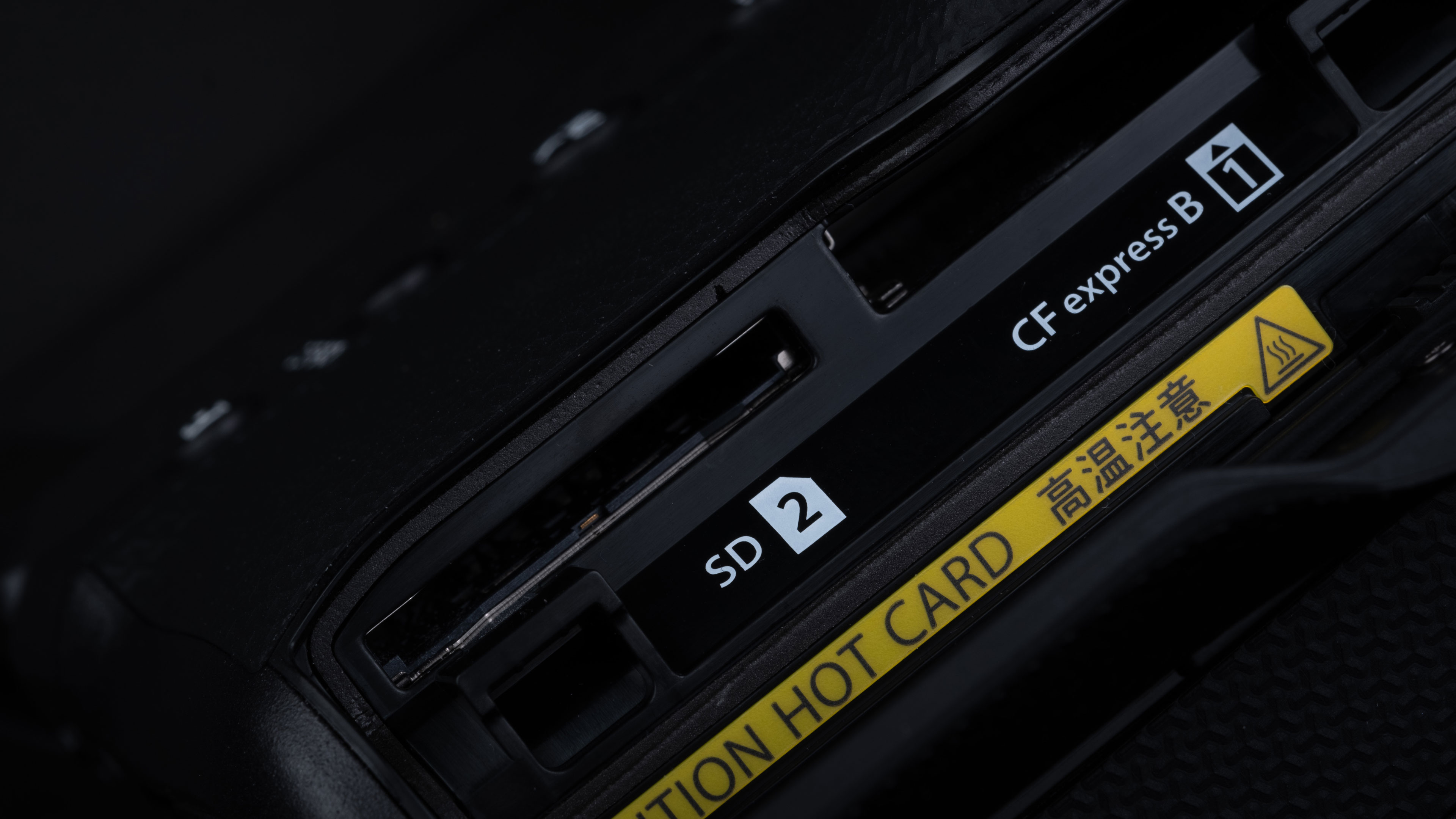
• Fujifilm GFX 100 II: 1x SD UHS II, 1x CFexpress Type B
• Fujifilm GFX 100S: 2x SD UHS II
In order to take full advantage of its faster and better burst mode and vastly improved video capabilities, the GFX 100 II swaps one of its card slots over to the CFexpress Type B format. The other card slot takes regular SD UHS-II cards, so you do have a choice of formats. This is a bit of a double-edged sword for many, as these mixed slots offer broader card compatibility, but you can’t use matched cards in the same way as you could with the dual SD UHS-II slots of the GFX 100S. On balance, it’s probably a better solution, but you have to wonder if at some point camera makers are going to swap fully to the CFexpress Type B card format. If the GFX 100 II had dual CFexpress Type B slots, it would certainly create extra expense for photographers, but it would feel like a definite step forward (as opposed to a half-step!).
10. Battery
• Fujifilm GFX 100 II: NP-W235, 540 shots
• Fujifilm GFX 100S: NP-W235, 460 shots
The GFX 100 II uses the same NP-W235 battery as its predecessor but does actually squeeze a little more life out of it. If it’s still not enough, you can fit an optional VG-GFX100 II vertical grip for greater endurance, and this isn’t even an option with the GFX 100S.
11. Connectivity
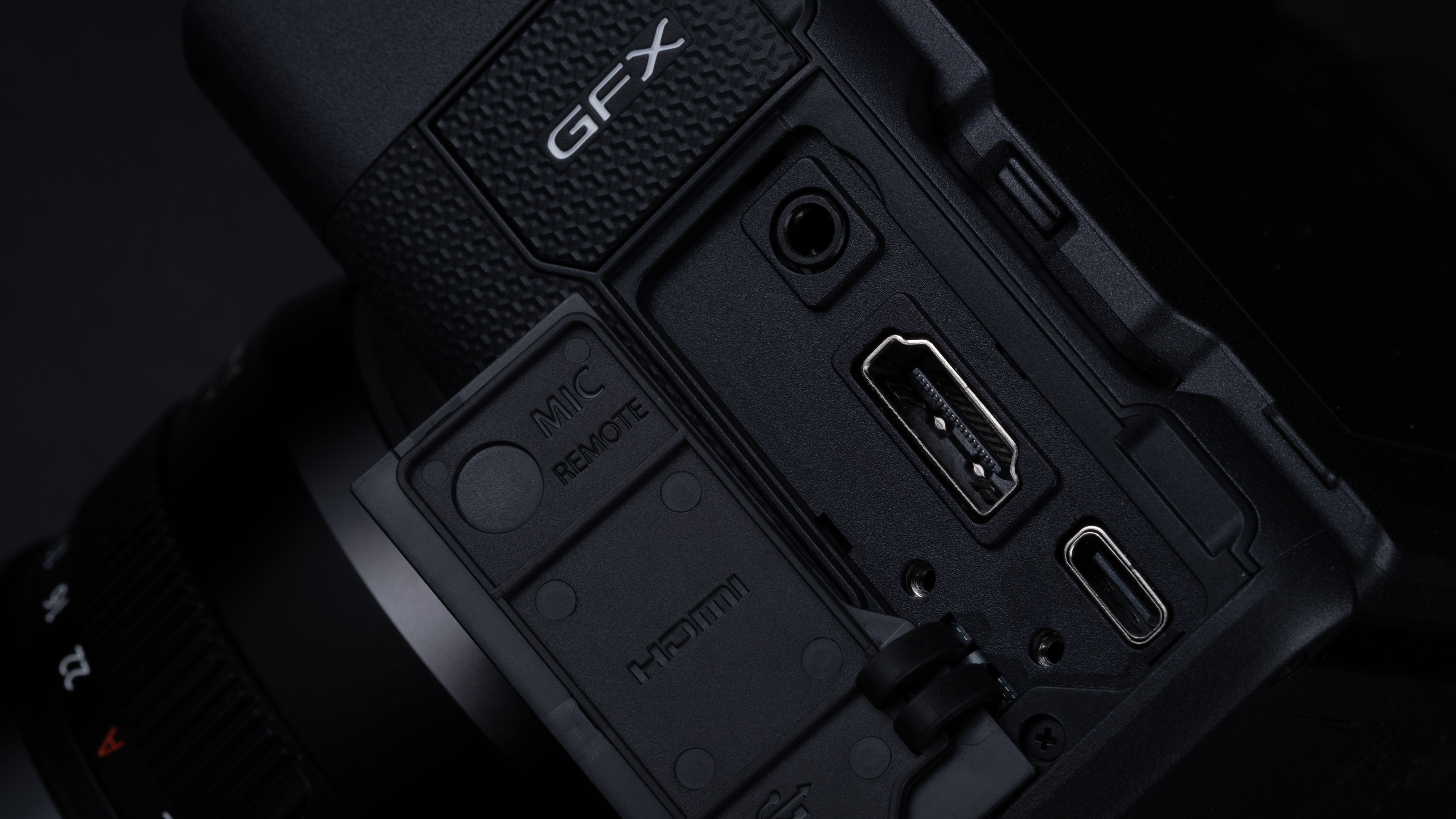
• Fujifilm GFX 100 II: USB Type-C, Ethernet, HDMI Type A, mic, headphone, Wi-Fi, Bluetooth
• Fujifilm GFX 100S: USB Type-C, HDMI micro Type D, mic, headphone, Wi-Fi, Bluetooth
The two key connectivity differences with the GFX 100 II are the addition of an ethernet/LAN port and the swap from a Type D micro HDMI port on the GFX 100S to a full size Type A port on the GFX 100 II. That alone will represent a useful gain for many videographers using external monitors/recorders. Otherwise, these cameras are the same. Both have USB Type-C connectors and sockets for both external mics and headphones for audio monitoring.
12. Size
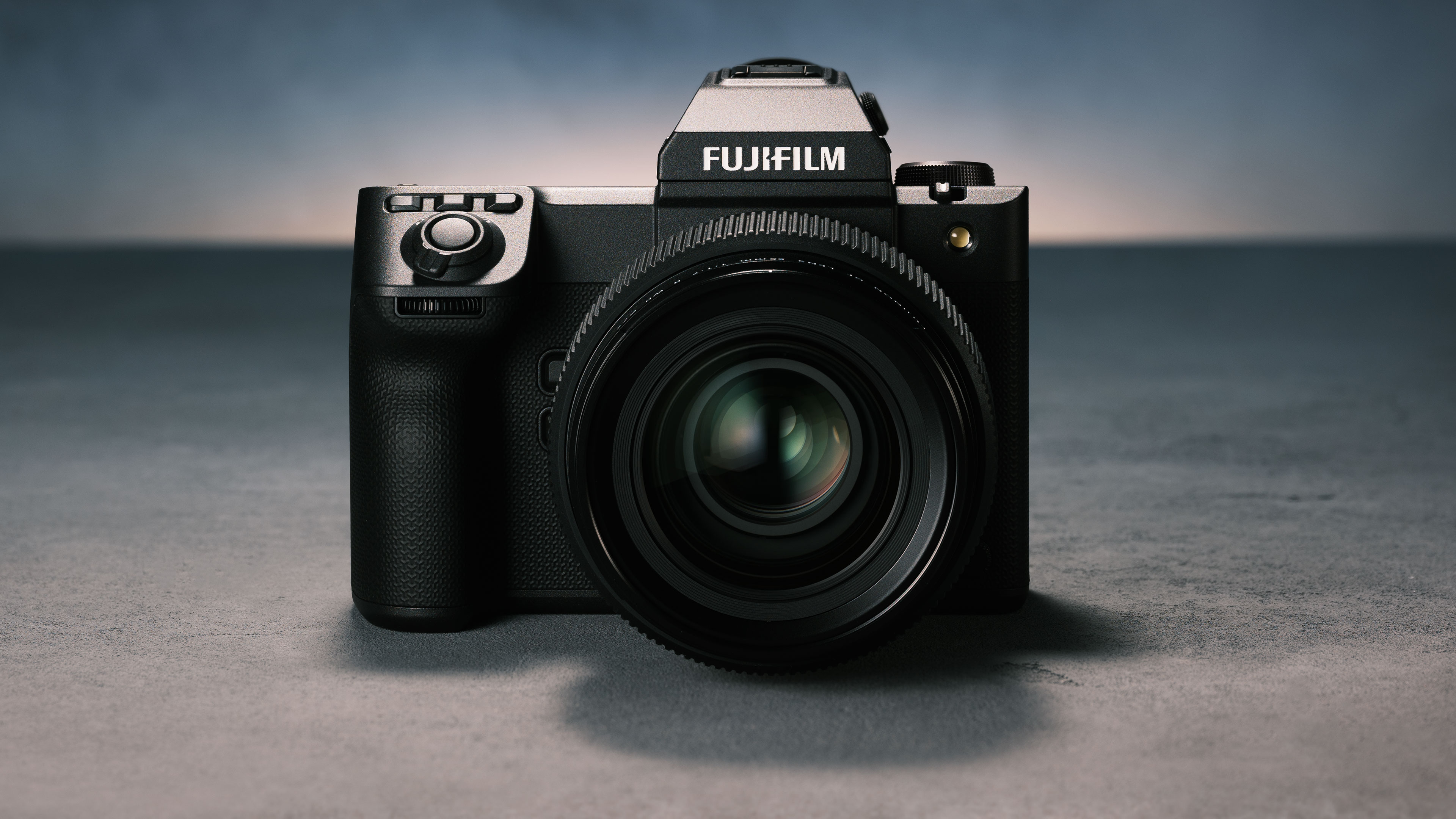
• Fujifilm GFX 100 II: 152.4 x 117.4mm x 98.6mm, 948g
• Fujifilm GFX 100S: 150 × 104 × 87mm, 900g
There’s not much difference in size. The GFX 100 II is a little larger, and while it’s only a few millimeters here and there, it’s probably enough to notice. The same goes for the increased weight, which is up from 900g for the GFX 100S to 948g for the GFX 100 II. They are both considerably smaller, though, than the original GFX 100.
Fujifilm GFX 100 II vs GFX 100S: conclusions

• Fujifilm GFX 100 II: $7,499 / £6,999
• Fujifilm GFX 100S: $5,199 / £4,499
If you’re a stills photographer shooting mostly static subjects, the GFX 100 II doesn’t necessarily add anything that the GFX 100S doesn’t already do perfectly well. The resolution is the same, the ISO range is almost the same and, while Fujifilm claims somewhat improved dynamic range at the lowest ISO setting, you might not notice much practical difference here either.
There are more obvious differences when it comes to continuous shooting and video. It’s hard to imagine many photographers buying a 100MP medium format camera for burst shooting, but if they do, the GFX 100 II will shoot both faster and a lot, lot longer than the GFX 100S. It should also offer much better focus tracking, at least for subjects programmed into its AI focusing algorithms.
And for video, the differences are even clearer. The GFX 100 II offers such a huge boost in video capabilities that it’s a no-brainer for filmmakers, especially those who want the USP of the medium format ‘look’.
But this does seem a narrow market – a medium format camera for burst shooting and video. If that’s your niche, the GFX 100 II is one of a kind and a big step up from the GFX 100S. But if you want medium format for high-resolution stills photography, the existing GFX 100S probably already does everything you need and at a lower cost.
Get the Digital Camera World Newsletter
The best camera deals, reviews, product advice, and unmissable photography news, direct to your inbox!

Rod is an independent photography journalist and editor, and a long-standing Digital Camera World contributor, having previously worked as DCW's Group Reviews editor. Before that he has been technique editor on N-Photo, Head of Testing for the photography division and Camera Channel editor on TechRadar, as well as contributing to many other publications. He has been writing about photography technique, photo editing and digital cameras since they first appeared, and before that began his career writing about film photography. He has used and reviewed practically every interchangeable lens camera launched in the past 20 years, from entry-level DSLRs to medium format cameras, together with lenses, tripods, gimbals, light meters, camera bags and more. Rod has his own camera gear blog at fotovolo.com but also writes about photo-editing applications and techniques at lifeafterphotoshop.com
